How a great Russian admiral became a saint (PICS)
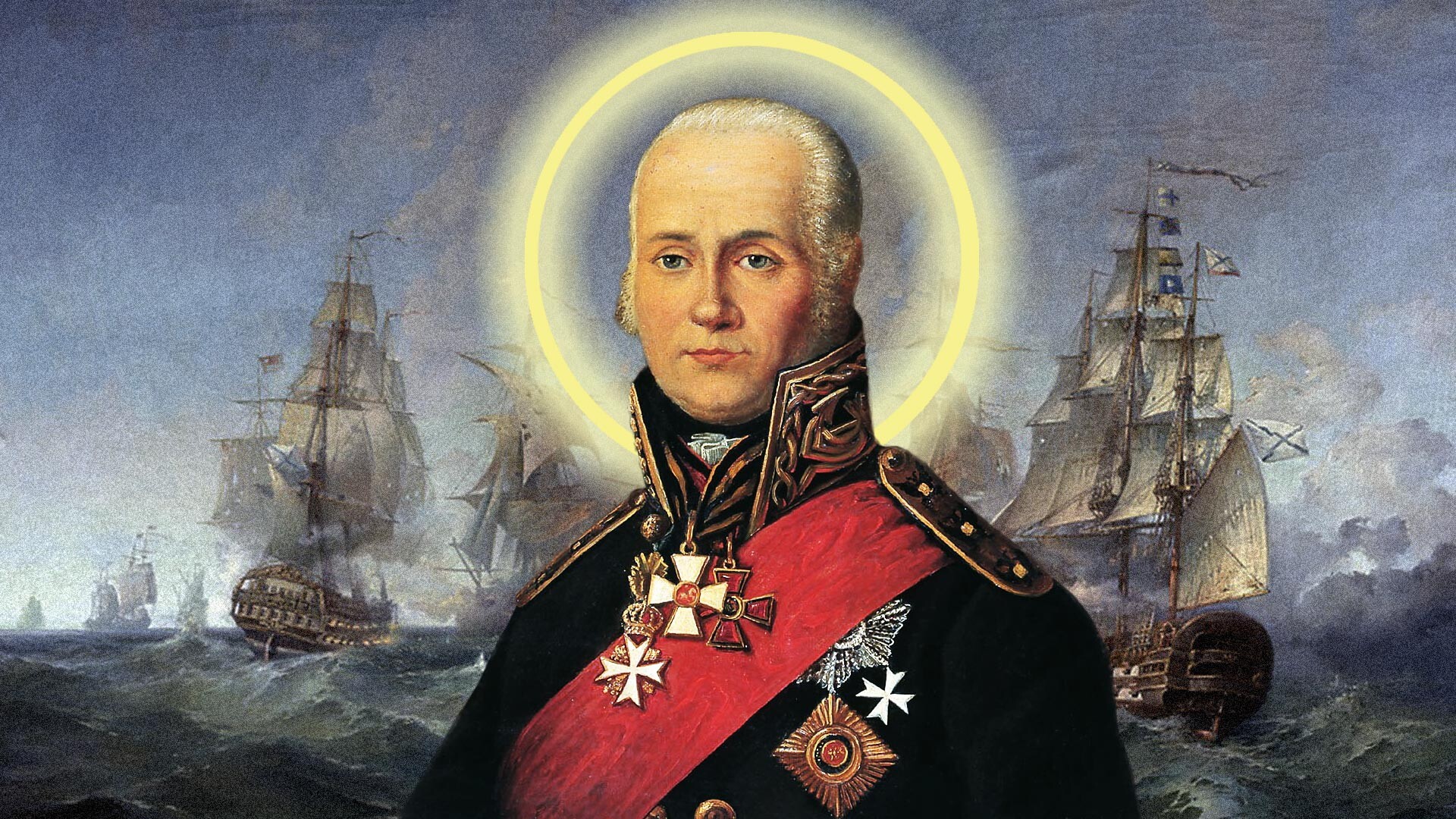
At the end of his military career in 1804, Admiral Fyodor Fyodorovich Ushakov, recalling his long service in the Russian Navy, wrote: “Thanks be to God, in all the aforementioned battles with the enemy and while the fleet was under my command at sea, through God’s will, not a single ship was lost and not a single serviceman was taken prisoner by the enemy.” These words were not empty bragging - Ushakov, indeed, had emerged victorious from all small and large naval battles in which he happened to take part.
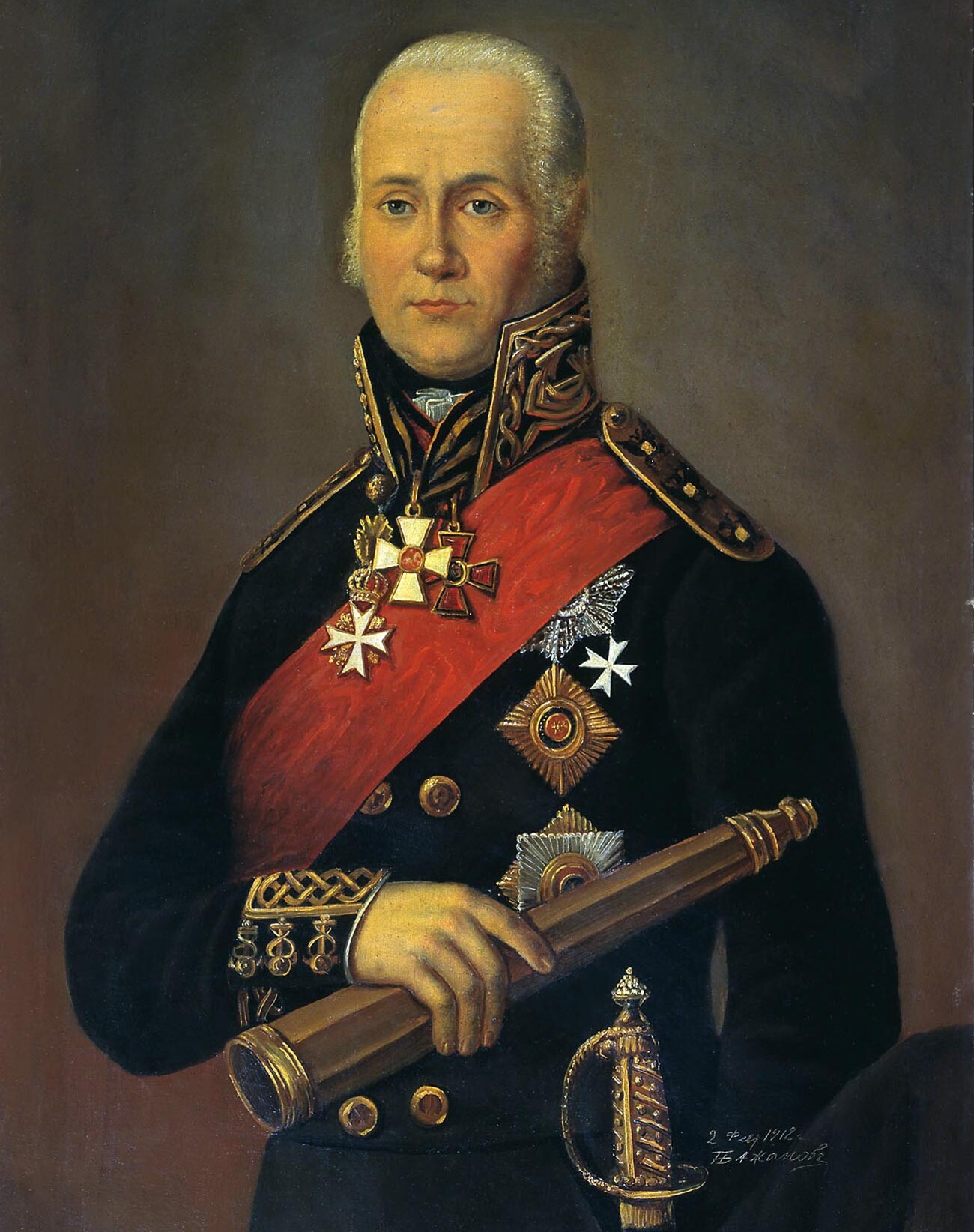
Portrait of Fyodor Fyodorovich Ushakov.
Pyotr Bajanov/Central Naval MuseumThe prevalent tactic in 18th century naval warfare was a line-of-battle tactic, whereby ships of the opposing sides formed a line from end to end opposite each other and engaged in hours-long unhurried battle. The line-of-battle tactic made it extremely difficult to achieve a superiority in forces to mount an attack against a part of the enemy fleet without breaking the formation. But, Ushakov was one of the few naval commanders who was not afraid to take risks and break traditional patterns. He boldly broke, if necessary, the battle formation, improvised, divided forces, maneuvered and created an advantage in the chosen direction of his main attack, which usually targeted enemy flagships. Their loss inevitably brought confusion and chaos into enemy ranks.
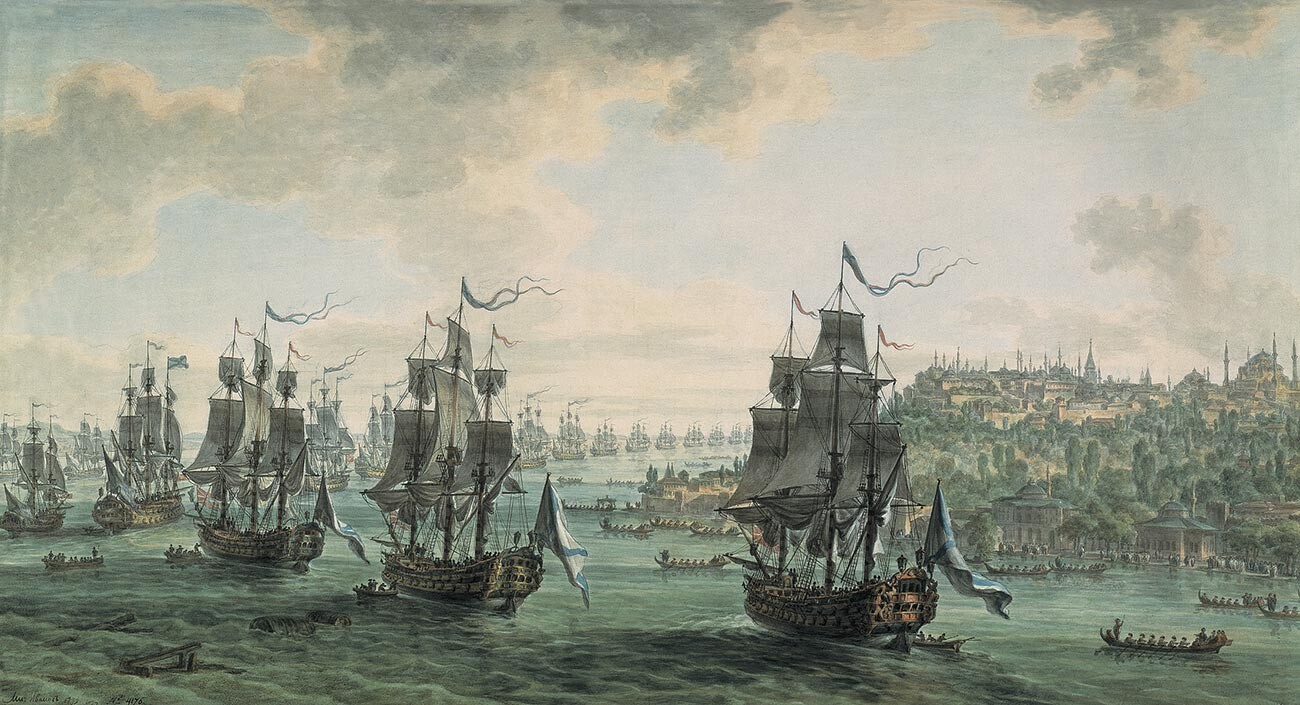
Russian fleet in the Bosphorus Strait.
Mikhail IvanovAt the same time, Fyodor Fyodorovich’s own flagship, contrary to the established conventions, could rarely be found in the middle of the battle formation, but was invariably present wherever the decisive part of the battle was taking place and in close proximity to the enemy. The crews of the ships under his command could not help but appreciate the firmness of character, personal courage and the unyielding will of their commander. “Ushakov always recognized the importance of maintaining high morale in his subordinates. He knew how to inspire sailors and officers to overcome any difficulties and make them strive for one common goal - the destruction of the enemy,” Soviet Vice-Admiral Yury Rall wrote.
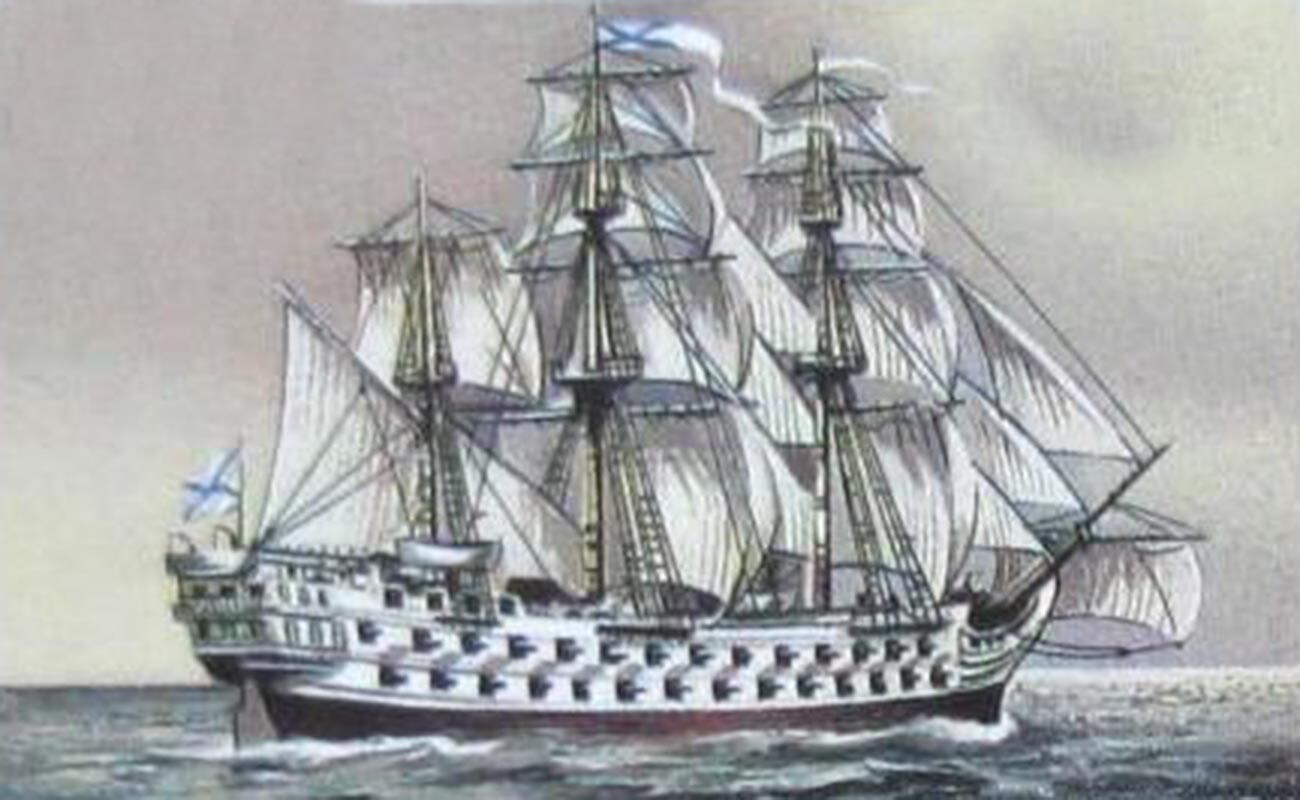
Ushakov's flagship 'St Paul'.
Public DomainThe highlight of Ushakov’s naval career was the Russian-Turkish War of 1787-1791, during which he inflicted a number of painful defeats on the enemy. Furthermore, he often achieved those victories, despite the enemy’s numerical superiority, thanks to the element of surprise accompanying Russian attacks and his use of tactics that were not common at that time, such as coming close to the enemy fleet without changing the march formation into combat one or creating and effectively using the so-called ‘Kaiser flag squadron’, a reserve of ships used to ensure the success of the main attack.

Battle of Fidonisi.
Vladimir Kosov (CC BY-SA 4.0)The main victory that Ushakov and, indeed, the entire Russian fleet, won in that war was the victory in the Battle of Cape Kaliakra on August 11, 1791. The Ottoman–Algerian fleet was anchored at sea under the cover of coastal batteries, when a Russian squadron suddenly appeared in the gap between it and the shore, causing chaos and confusion in the enemy ranks. Attempts by the Turkish fleet, which was suffering heavy losses, to line up in a battle formation did not lead to anything and the coastal batteries soon had to cease fire for fear of hitting their own ships. The defeat at Kaliakra forced the Ottoman Empire to urgently seek peace with Russia.
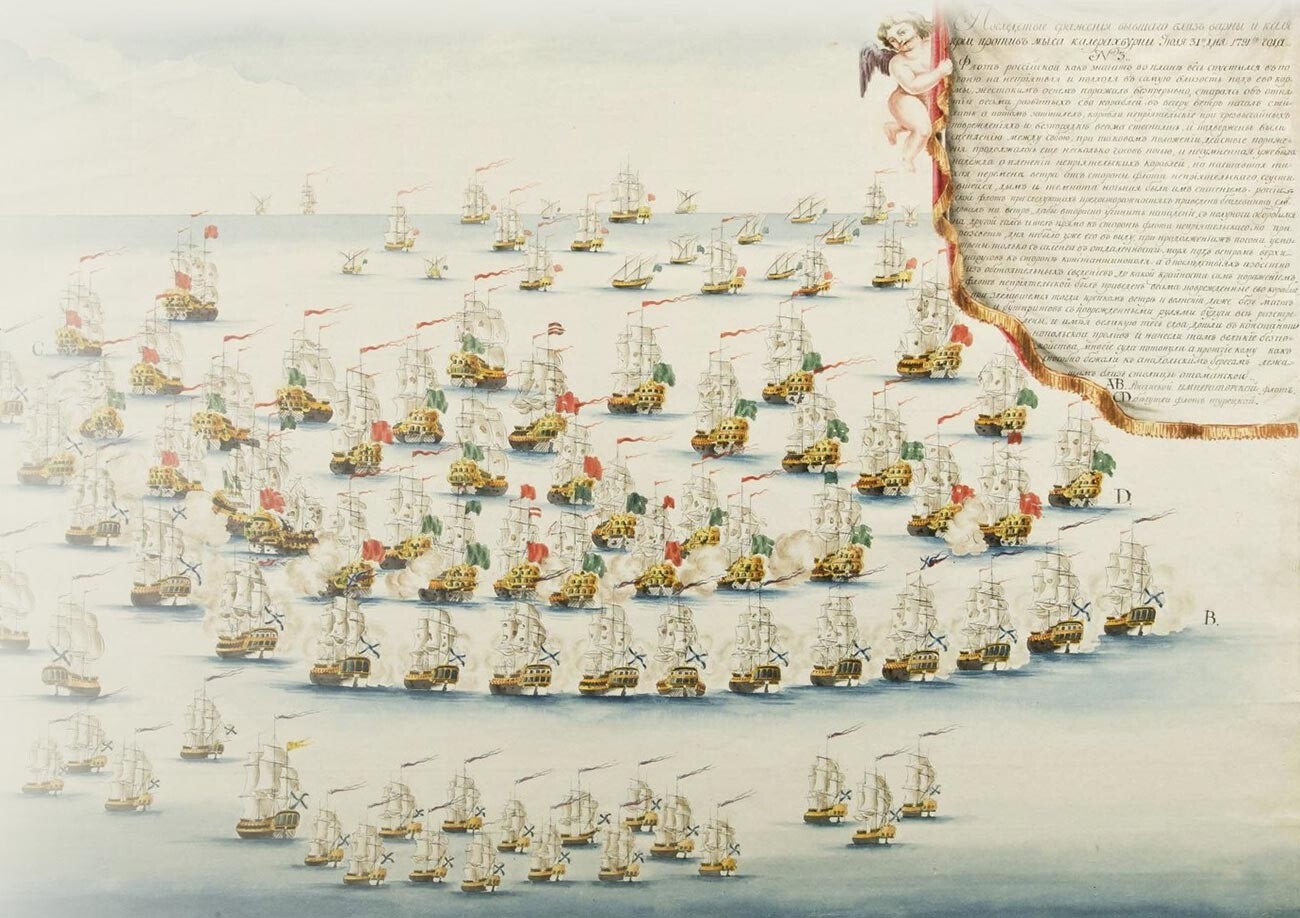
Battle of Kaliakria.
Afanasy de Paldo.Paradoxical as it may seem, but Fyodor Ushakov, who fought so much and so successfully against the Turks, in 1798, led them into battle himself. During the War of the Second Coalition, Russia and the Ottoman Empire acted as allies and the naval commander led a united squadron operating in the Mediterranean. One of its main tasks was to throw the French out of the Ionian Islands to the west of Greece.
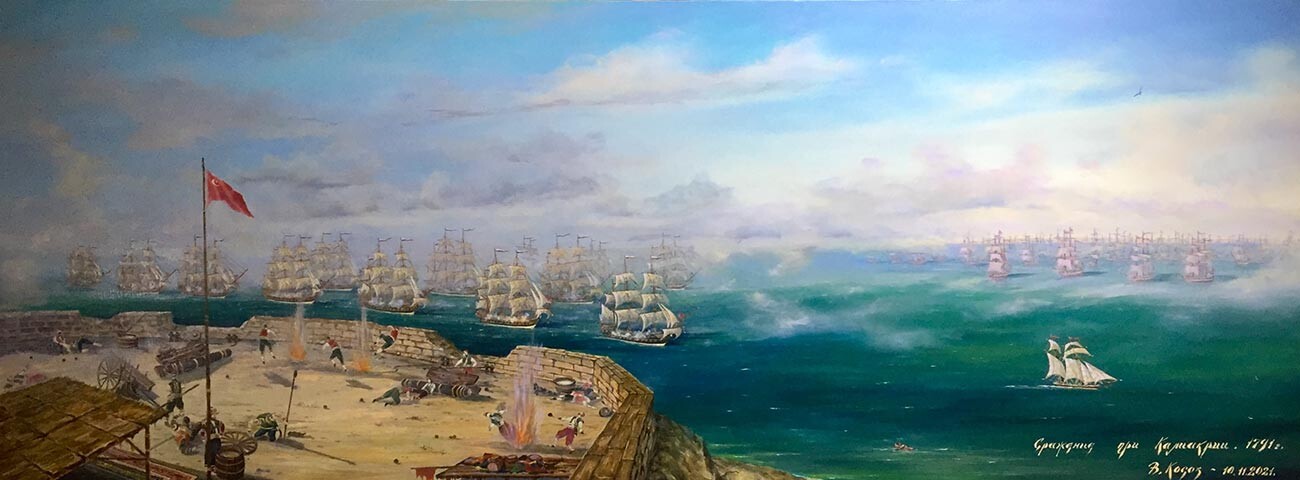
Battle of Kaliakria.
Vladimir Kosov (CC BY-SA 4.0)The largest and most important island of the archipelago was Corfu (now Kerkyra), which housed a well-fortified city of the same name with a 3,000-strong garrison. Another 500 French soldiers were deployed on the bastions on the small island of Vido, which covered approaches to Corfu and which the Russian naval commander fittingly described as a key to the city. Ushakov had slightly under 8,000 men at his disposal, mostly Turks and Greek militias.
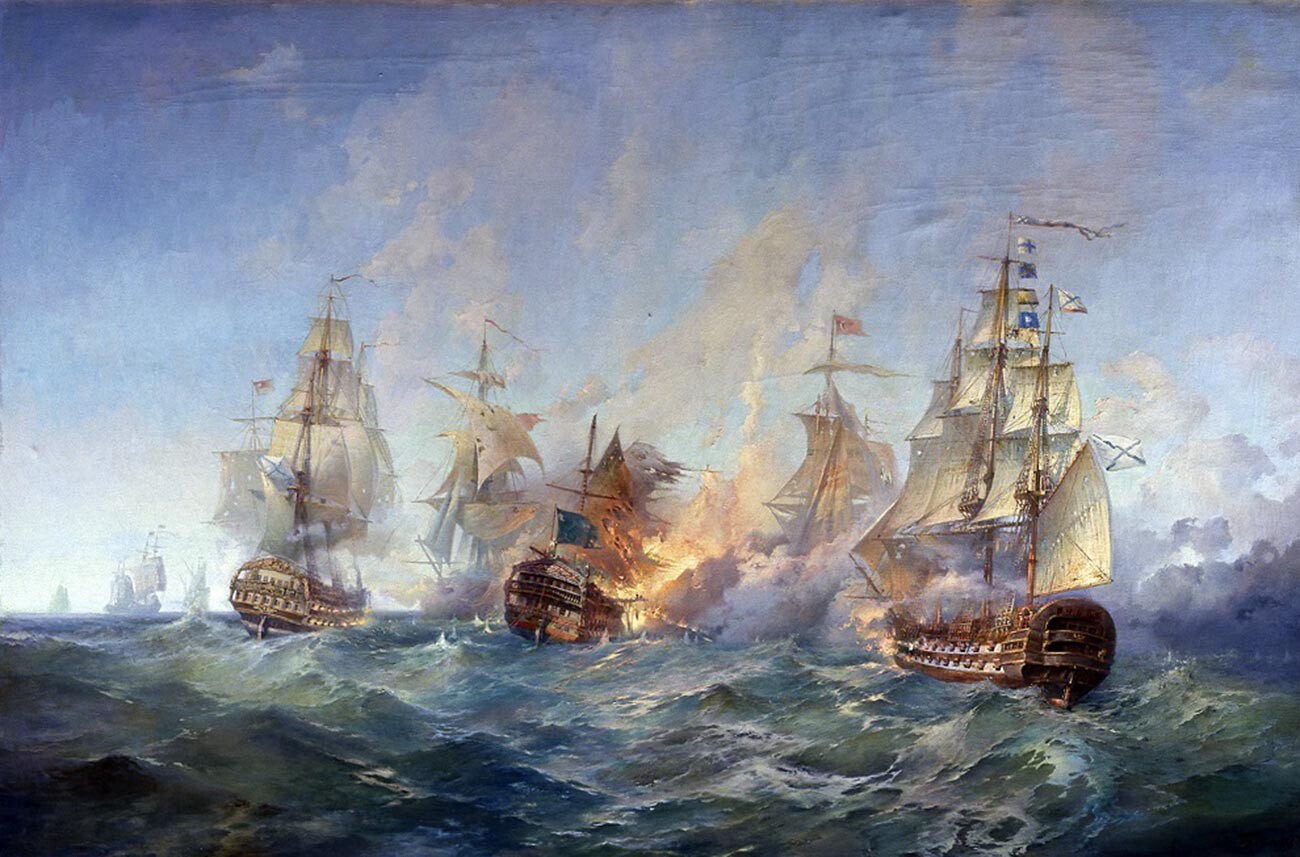
Battle of Tendra.
Alexander BlinkovAfter a siege of several months, on March 1, 1799, the Russian commander decided to storm the island. For four hours, the allied squadron bombarded the French fortifications on Vido. The cannonade was not yet over when Ushakov gave the order for a landing force of 2,000 troops to proceed. At the same time, the commander’s flagship was attacking the enemy’s coastal batteries. “Continuous, terrible shooting and the thunder of large guns shook all the surroundings... Vido, one might say, was completely blown up by buckshot and not only the trenches... but there was not a single tree left that would not have been damaged by this terrible iron hail,” an eyewitness recalled.
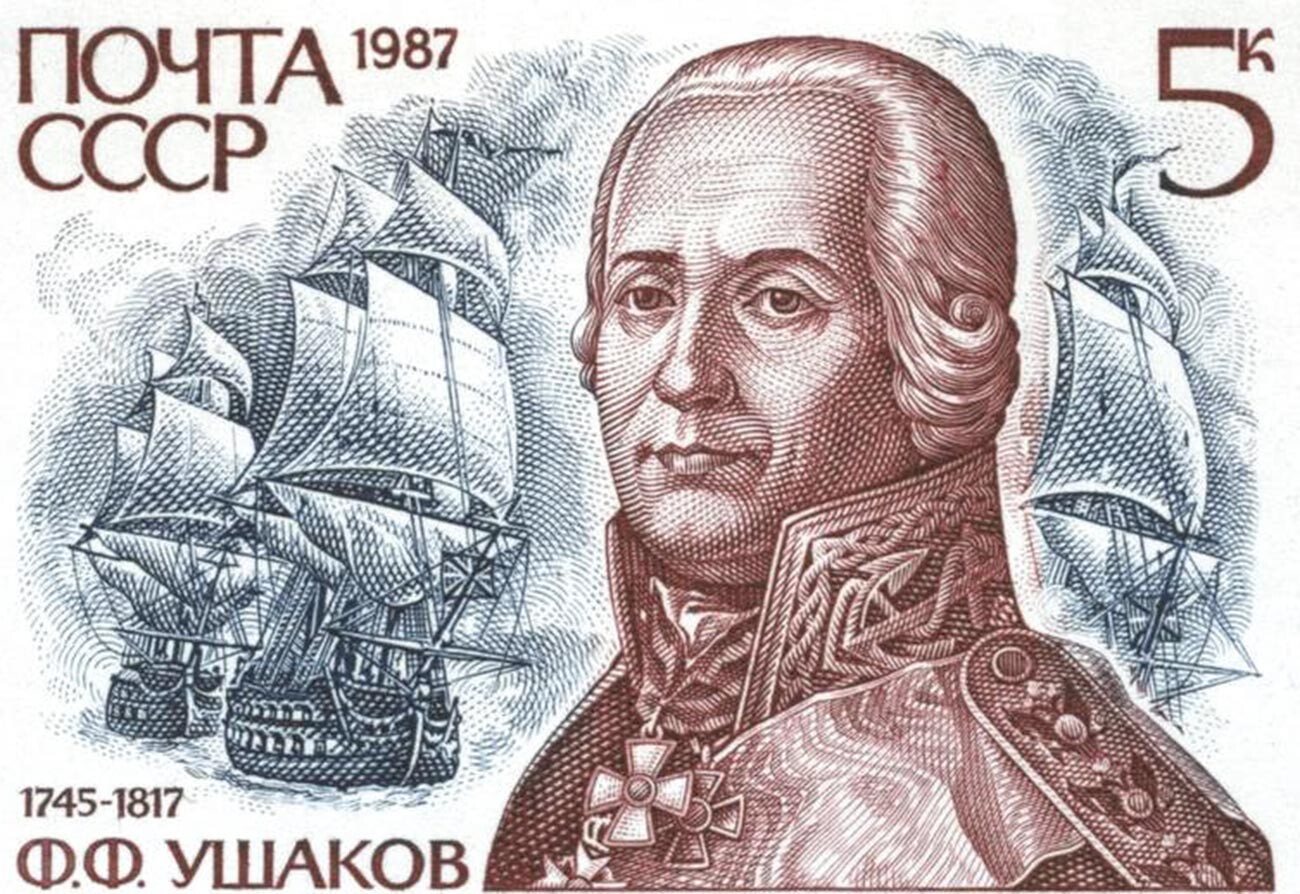
A USSR stamp, 5k maroon, Admiral Ushakov.
Public DomainVido was taken, which allowed the Russian artillery to bombard Corfu safely and effectively from this high position. In the end, the enemy garrison capitulated. Thanks to the admiral’s intervention, the captured French soldiers were spared, although the Turkish troops wanted to kill them. “Hooray! To the Russian fleet!... I now say to myself: why wasn’t I at Corfu, at least as a midshipman!” Alexander Suvorov,another great Russian military leader, wrote in admiration.
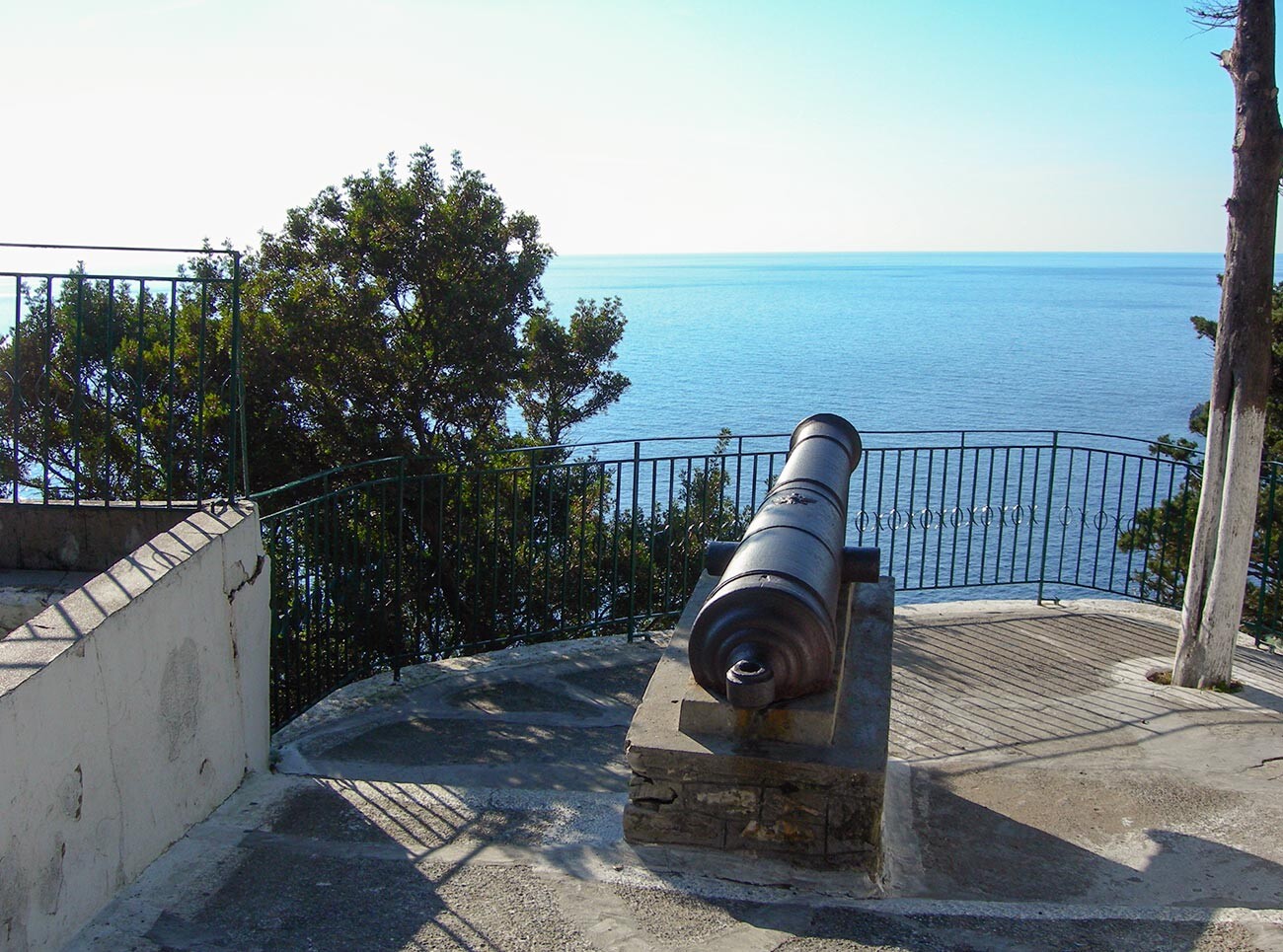
A Russian gun from the Russian-Ottoman occupation of Corfu.
Edal Anton Lefterov (CC BY-SA 3.0)The Mediterranean operation became Fyodor Ushakov’s last major military campaign. In 1807, he retired and went to his village of Alekseyevka in the Tambov province. He devoted the last ten years of his life to the church, prayers and charity. Ushakov often visited the neighboring Sanaksar monastery and - despite his advanced years (he was already over 60) - stood all the church services on foot, together with the monks. During Lent, the naval commander lived in the monastery in a cell specially provided for him.
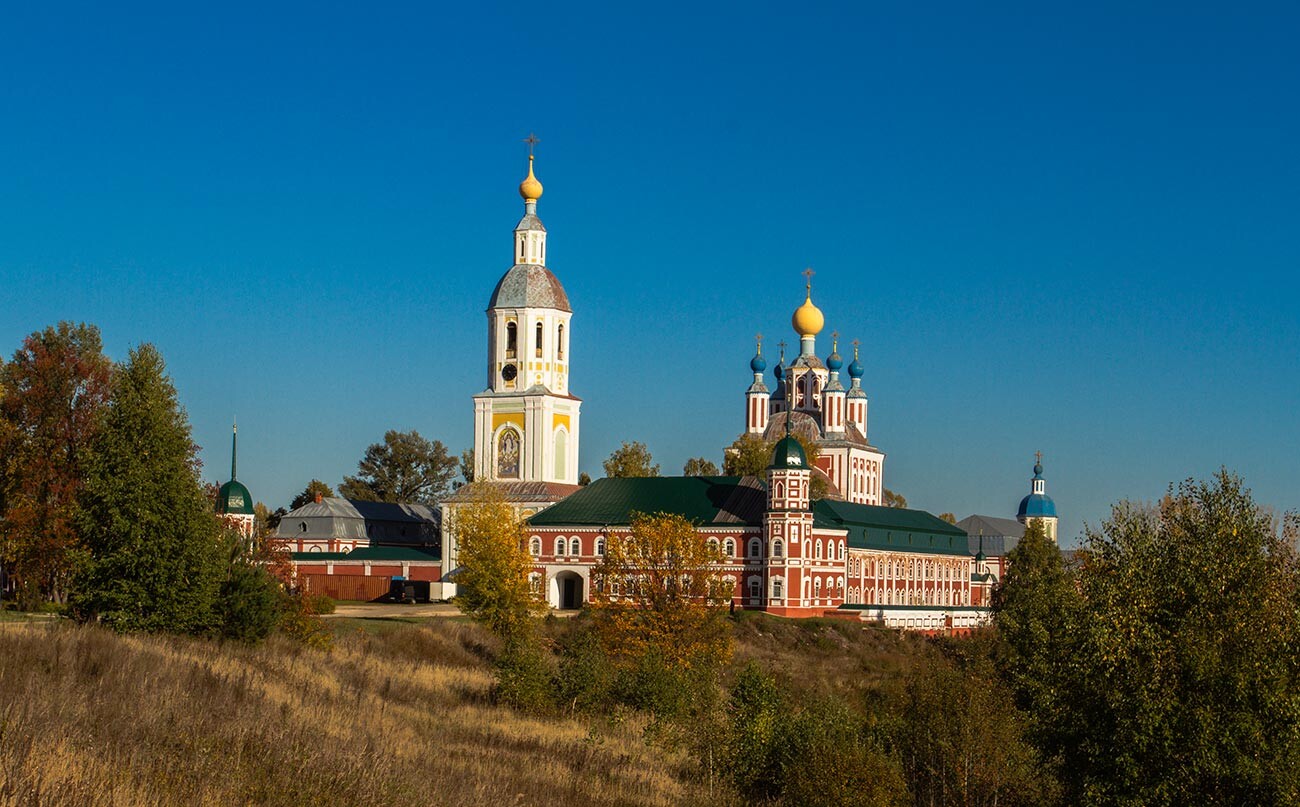
Sanaksar monastery.
Ekaterina Dymova (CC BY-SA 4.0)In recognition of his pious life, in 2000, the Russian Orthodox Church included Fyodor Fyodorovich Ushakov on the list of locally revered saints of the Saransk diocese and, in 2004, on the list of all-Russia saints as a righteous warrior. The act of his canonization said: “The strength of his Christian spirit manifested itself not only in glorious victories in the battles for the Fatherland, but also in great mercy, which amazed even the enemy he defeated... The mercy of Admiral Fyodor Ushakov spread to everyone.”
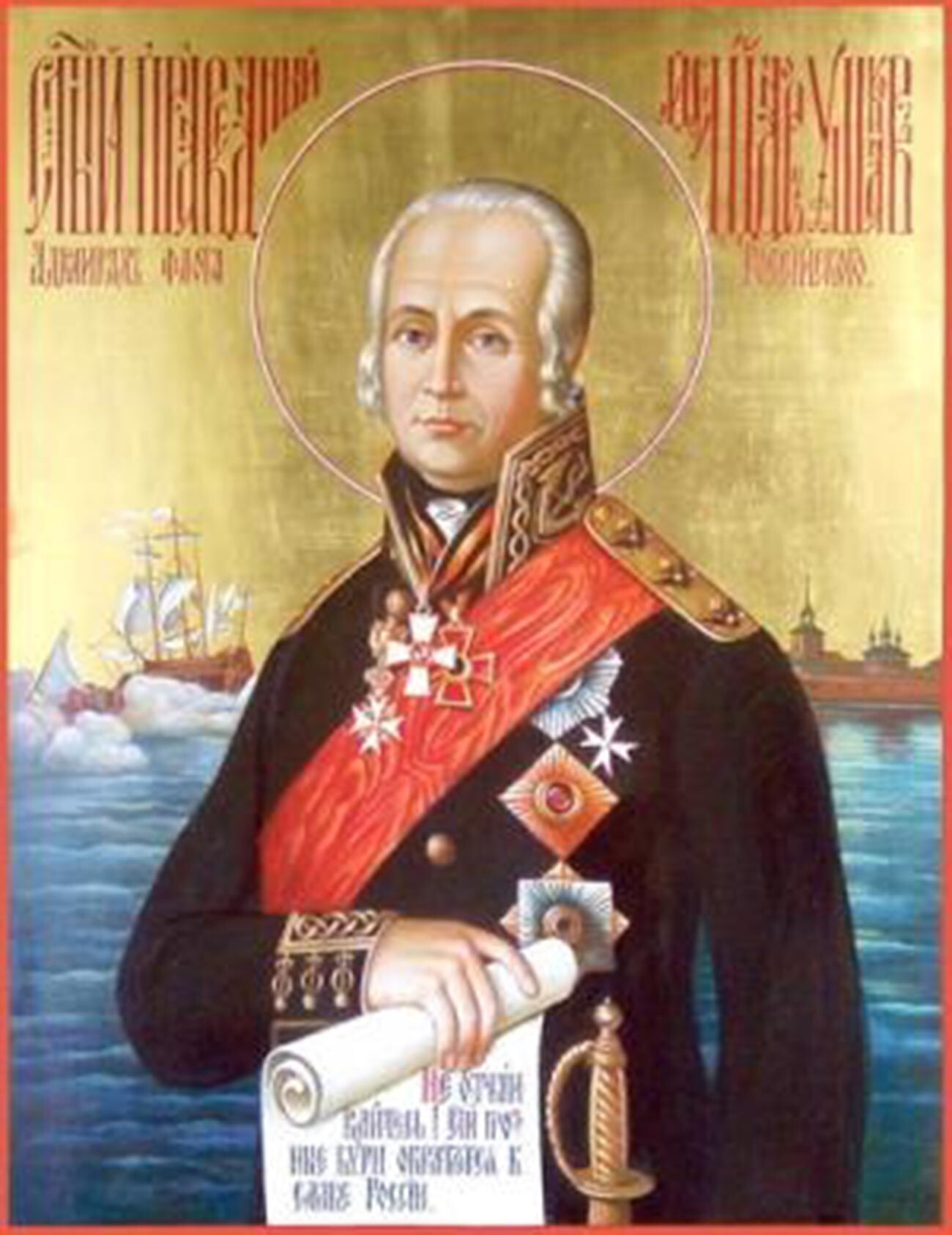
Saint Righteous Warrior Fyodor Ushakov.
CatFish2013 (CC BY-SA 3.0)If using any of Russia Beyond's content, partly or in full, always provide an active hyperlink to the original material.
Subscribe
to our newsletter!
Get the week's best stories straight to your inbox